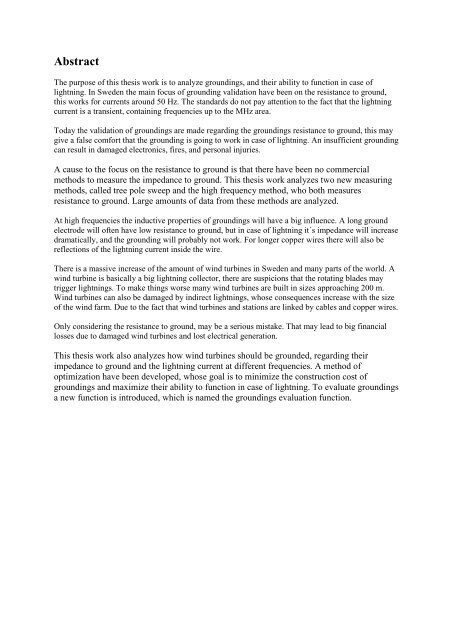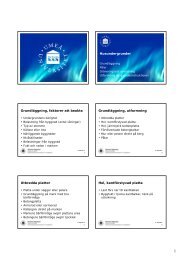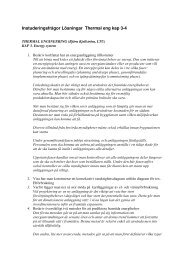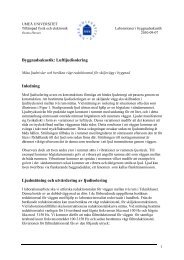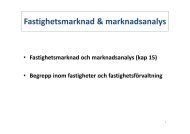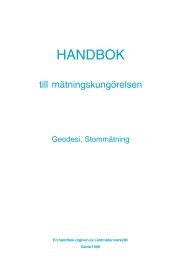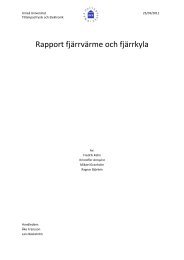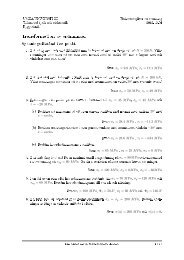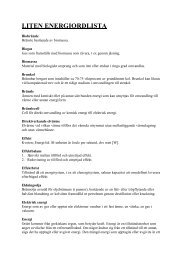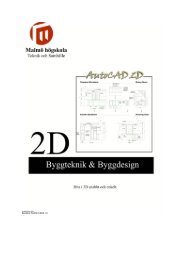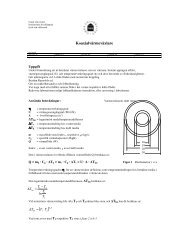Jordningar- - Tillämpad fysik och elektronik - Umeå universitet
Jordningar- - Tillämpad fysik och elektronik - Umeå universitet
Jordningar- - Tillämpad fysik och elektronik - Umeå universitet
Create successful ePaper yourself
Turn your PDF publications into a flip-book with our unique Google optimized e-Paper software.
Abstract<br />
The purpose of this thesis work is to analyze groundings, and their ability to function in case of<br />
lightning. In Sweden the main focus of grounding validation have been on the resistance to ground,<br />
this works for currents around 50 Hz. The standards do not pay attention to the fact that the lightning<br />
current is a transient, containing frequencies up to the MHz area.<br />
Today the validation of groundings are made regarding the groundings resistance to ground, this may<br />
give a false comfort that the grounding is going to work in case of lightning. An insufficient grounding<br />
can result in damaged electronics, fires, and personal injuries.<br />
A cause to the focus on the resistance to ground is that there have been no commercial<br />
methods to measure the impedance to ground. This thesis work analyzes two new measuring<br />
methods, called tree pole sweep and the high frequency method, who both measures<br />
resistance to ground. Large amounts of data from these methods are analyzed.<br />
At high frequencies the inductive properties of groundings will have a big influence. A long ground<br />
electrode will often have low resistance to ground, but in case of lightning it´s impedance will increase<br />
dramatically, and the grounding will probably not work. For longer copper wires there will also be<br />
reflections of the lightning current inside the wire.<br />
There is a massive increase of the amount of wind turbines in Sweden and many parts of the world. A<br />
wind turbine is basically a big lightning collector, there are suspicions that the rotating blades may<br />
trigger lightnings. To make things worse many wind turbines are built in sizes approaching 200 m.<br />
Wind turbines can also be damaged by indirect lightnings, whose consequences increase with the size<br />
of the wind farm. Due to the fact that wind turbines and stations are linked by cables and copper wires.<br />
Only considering the resistance to ground, may be a serious mistake. That may lead to big financial<br />
losses due to damaged wind turbines and lost electrical generation.<br />
This thesis work also analyzes how wind turbines should be grounded, regarding their<br />
impedance to ground and the lightning current at different frequencies. A method of<br />
optimization have been developed, whose goal is to minimize the construction cost of<br />
groundings and maximize their ability to function in case of lightning. To evaluate groundings<br />
a new function is introduced, which is named the groundings evaluation function.


